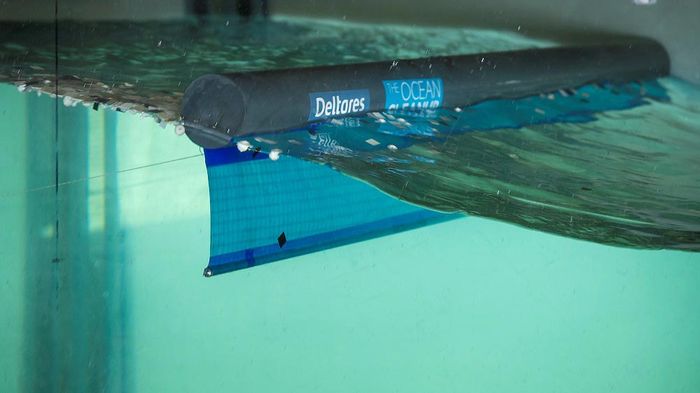
Deltares tests confirm workability of boom design
Back to updatesIn the past months, our engineering team has continued its work on developing the barriers designed to collect ocean plastics. To assess how the boom behaves in water, The Ocean Cleanup collaborated with independent research institute Deltares to perform a series of scale model tests.
By generating artificial waves, currents, and winds in a controlled environment, it was possible to accurately measure the forces that act on the boom and mooring lines.
Using the results of these tests, The Ocean Cleanup has been able to determine the hydrodynamic coefficients of the barrier, enabling the engineers to improve computer models of the overall cleanup system. The tests confirmed that The Ocean Cleanup’s full-scale computer model shows a major resemblance to the outcomes of the Deltares tests. The scale model tests will help The Ocean Cleanup’s engineers to design a cleanup structure capable of surviving the conditions it will face in the Great Pacific Garbage Patch.
Besides measuring forces, the Deltares testing program also set out to investigate the barrier’s ability to efficiently capture plastic under the influence of waves, with promising results.
The Ocean Cleanup’s engineering team is now preparing for the next series of tests, which will take place at maritime research institute MARIN in October.

